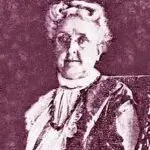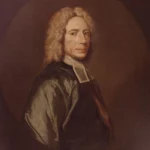The Point: After finding hope in Christ, we must share it with others.
Peter and John: Acts 3:1-4.
[1] Now Peter and John were going up to the temple at the hour of prayer, the ninth hour. [2] And a man lame from birth was being carried, whom they laid daily at the gate of the temple that is called the Beautiful Gate to ask alms of those entering the temple. [3] Seeing Peter and John about to go into the temple, he asked to receive alms. [4] And Peter directed his gaze at him, as did John, and said, "Look at us." [ESV]
[1-4] “It is immediately obvious that these early Christians were fascinated with Jesus – who He was and what He had done. Their message was more than just a philosophical system or a grand ethical scheme. In essence, it was the person and work of Jesus Christ. They had come into fellowship with Jesus Christ and, as a consequence, experienced the forgiveness of sins [2:38]. In Jesus Christ, they had found joy [2:46]. He was a man attested to you by God with mighty works and wonders and signs that God did through him in your midst [2:22]. They crucified Him [2:23], but God raised Him from the dead [2:24,32] and declared Him both Lord and Christ [2:36]. And here, in the temple, Peter offers Jesus to a needy soul: I have no silver and gold, but what I do have I give to you. In the name of Jesus Christ of Nazareth, rise up and walk! [3:6]. It was because they understood Jesus to be the fulfillment of Old Testament prophecy that the first Christians did not, initially at least, see the need to cut themselves off from Jewish worship. In a very important sense, these early Christians saw themselves as still Jewish – authentically Jewish, having come to understand what the Old Testament Scriptures had been all about from the very beginning. They still attended the temple and synagogue services. They did not abandon altogether the institutions of worship with which they were accustomed, and the passage before us shows how they attended the prayer services of the temple [2:1,15; 3:1; 10:3,9,30]. While they did engage in prayer at the temple, there is no evidence that they attended the sacrificial ceremonies of the temple. These, they had come to understand, were abrogated by the death of Jesus Christ on Calvary. To suggest otherwise would seriously question whether or not the disciples had come to understand the finality of the death of Jesus Christ as a sacrifice for sinners. According to the Mishnah – a work that contains the Jewish oral law, including instructions about temple worship in the first half of the first century – Jews were expected to offer up prayer (in the temple or synagogue) three times a day – in the morning, afternoon, and evening. So Luke records that Peter and John went up to the temple at the ninth hour or prayer. The enormous Temple Mount of Herod had a 45-foot-wide colonnade around it. The eastern colonnade was called Solomon’s Colonnade and was used by Jesus and the early Christians as a place of meeting and teaching. More than forty feet high, the roof of the colonnade rested on the outside wall of the platform on one end and on two rows of columns on the other. The southern colonnade was much larger and more than three stories tall, and the Sanhedrin met on the eastern end of it. The remainder was the commercial center for the temple. It was probably in this section where Jesus confronted the merchants and disrupted their market because they were cheating the people and intruding upon the Gentiles’ place of prayer [Matt. 21:12-13]. At three in the afternoon they gathered for prayer. Many hundreds of people gathered in the outer sections of the temple. We have no indication how much time had elapsed since Pentecost. Just as the apostles arrived, a crippled man appeared, carried by others to one of the entrance gates in the temple area. More than likely, relatives and friends did this. It would not have been an unusual sight. Due to the lack of modern medical care, worshipers at the temple saw such things on a daily basis. What these relatives did for the crippled man was regarded as religiously meritorious. Deformity was a serious ailment in Israel. Descendants of the priestly line of Aaron who had such deformities were forbidden to take part in certain rituals [Lev. 21:17-20]. Forty years old [Acts 4:22], the cripple was a social outcast because of his congenital deformity, unable to enter the parts of the sanctuary to which this Beautiful Gate promised entry. He had never walked in his entire life. Thus he had never walked beyond this gate into the nearer presence of God. Probably, even since he was young, he had been utterly dependent on the kindness of others to bring him to the temple to beg. Folks like him know the kindness that religious people often show. Thus, the crippled and indigent tend to show up around churches. There was no social security or government help of any kind. They were dependent on the generosity of these worshipers in the temple. It is easy to imagine him with a piece of clothing stretched out before him or a bowl of some kind with a few coins in it. He would cry out, ‘Alms for the poor!’ It was a pitiful existence with little relief. The sheer monotony of his life is enough to elicit sympathy from the hardest heart. But this day was going to be different! Passing by him were two of the apostles, Peter and John, and what took place is nothing short of a divine miracle.” [Thomas, pp. 66-70]
The Healing of the Lame Beggar: Acts 3:5-8.
[5] And he fixed his attention on them, expecting to receive something from them. [6] But Peter said, "I have no silver and gold, but what I do have I give to you. In the name of Jesus Christ of Nazareth, rise up and walk!" [7] And he took him by the right hand and raised him up, and immediately his feet and ankles were made strong. [8] And leaping up he stood and began to walk, and entered the temple with them, walking and leaping and praising God. [ESV]
[5-8] “The healing of the cripple was one of those events that Luke had already described as wonders and signs [2:43]. Earlier, Luke had added another term in describing the miracles of Jesus: mighty works [2:22]. These three categories, signs, wonders, and mighty acts, encapsulate for us what these miracles are designed to show. Miracles are a display of divine power. They tell us something has occurred that cannot be explained by the normal course of science. The congenitally crippled do not suddenly get up and walk and leap about. Something extraordinary took place here, requiring the putting forth of power from outside. Miracles cannot happen by the agency of created power alone. They are indicative of the power of the Creator rather than the power of that which has been created. In commanding the crippled man to walk, Peter told him to do something that he lacked the power to do. Peter was commanding the impossible! But what is impossible with men is possible with God. The Lord of creation was at work here. As the lame man rose to his feet for the first time and then leapt into the air, nothing short of life-generating power was evident. The bones of his feet, which perhaps had been out of alignment in some way, now came together. The sense of balance that he never really experienced came to him. He was able, in an instant, to exercise agility without the use of corrective surgery, which today may have accomplished the same thing, but over a longer period of time involving months of physiotherapy. Notice that Peter first asked the man to look at him. Doubtless, this gained his complete attention, and it also ensured that the resultant miracle would be seen as something that, though not originating in Peter, nevertheless did not take place without Peter’s instrumentality. The miracle took place through Peter, indicating that Peter was pointing to something or to Someone else! This explains why he prefaced the miracle with the words: I have no silver and gold, but what I do have I give to you. In the name of Jesus Christ of Nazareth, rise up and walk [6]. The miracle was in the name of Jesus Christ of Nazareth. It pointed to Jesus Christ as its Author, not to Peter. Thus it was a sign of what Jesus had come into this world to do. Jesus came to restore the world, from its current state of disintegration and sin, to its former state of beauty and glory. The coming of Jesus Christ ushers in the beginning of a process that, following His return at the end of the age, will accomplish the complete fulfillment of this task. The healing of this cripple is indicative – a sign – of what one day will be manifested in all its splendor. This man was to look to Jesus for his healing and give thanks to Him for it. Peter was the conduit through whom Jesus now, by the Spirit, poured forth His mercy.” [Thomas, pp. 70-72]
Praising God: Acts 3:9-10.
[9] And all the people saw him walking and praising God, [10] and recognized him as the one who sat at the Beautiful Gate of the temple, asking for alms. And they were filled with wonder and amazement at what had happened to him. [ESV]
[9-10] “What happened filled those who witnessed it with wonder and amazement. Miracles are not only mighty acts and signs; they are also wonders. They filled the onlookers with a sense of awe at the divine presence. They had a sense of the Holy One in their midst to which the proper response is one of awe. Four times in three verses, Luke describes the man as walking, as though contrasting his former state of paralysis. We cannot draw from stories of this nature that similar miraculous healings are promised for our time, though God may choose to do something extraordinary at any time. What we can conclude is that miracles of this kind provide us with a glimpse of the world to come. They are signs of the re-created order of things. To those who experience disability in this world, there is the promise that in the world to come they will enjoy the liberty and blessing of a new body. In our resurrection bodies, every last trace of what sin has done to us will be gone forever.” [Thomas, p. 72]
“Why is Luke telling us this story? Are we to meant to conclude, for example, that the healing of physical ailments is essential to the gospel? If that were indeed the case, we would need to ask a further question: why, then, did the apostles not engage in more healings? Despite the fact that the apostles were given the gift of healing, apparently they were not able to heal everyone, even those within the community of the faithful. No, healings were signs of the coming of the kingdom of God, as Isaiah 35 had so graphically indicated and as Jesus had confirmed to a doubting John the Baptist in prison [John 7:20-23]. Yet healings were not the kingdom’s sole or even primary function. Sickness indicates a world that is out of joint. Sickness ought not be present in a world created by the power of God. The reason for sickness is sin – not that we can necessarily draw a direct line from a specific sin to a specific illness, but apart from sin in the world, there would be no sickness. Jesus came to pay the penalty of sin that brought sickness into the world. This does not mean that when we believe in Jesus, we can expect to be healed immediately. But it does mean that the cause of our sickness – sin – has been dealt with; and eventually, in the world to come, we will be healed. We will have new and perfect bodies. God may heal us in this world, but the principle of death still operates. This cripple who leaped in the temple did eventually die. The world in which we live continues to groan in pangs of childbirth, waiting for the day when all things will be made new. Later, in his sermon explaining the healing of the crippled man, Peter will say this very thing: we do not hope in temporal healing, but in the eternal healing of Christ that will one day perfectly restore us in both body and soul [3:21]. Physical healing in this world is indicative of something more permanent – the healing of our souls and, secondarily, the healing of our risen bodies.” [Thomas, pp. 72-73]
Questions for Discussion:
1. Set the stage for the events of this passage. Why were Peter and John going to the Temple? Why did they still use the Temple as a place of prayer? Why was the lame man there? How did he get there? What did he expect to receive at the gate of the Temple? Why wasn’t he allowed to enter the Temple?
2. What did the lame man want from Peter and John? What did he receive? What were miracles designed to show? What is significant about the name of Jesus Christ? Why did Peter use those words in healing the lame man?
3. Note the responses of the various people to the miracle. How did the lame man respond? Imagine what it meant to him to be able to enter the Temple for the first time. How did all the people at the Temple respond?
4. Why is Luke telling us this story? Read Peter’s sermon in 3:11-26. Note how Peter uses the miracle of healing as an opportunity to preach the Gospel. What can we learn from Peter about always being prepared to use any opportunity that presents itself to us in order to share the Gospel?
References:
Acts, Darrell Bock, BENT, Baker.
The Acts of the Apostles, David Peterson, Eerdmans.
Acts, Derek Thomas, P & R Publishing.

















